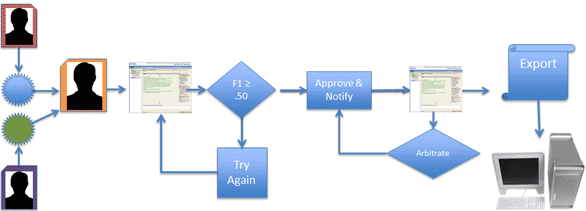Software Research and Development
Research shows that all neurological and psychiatric diseases are interconnected. For example, it is possible that someone might sustain traumatic brain injury and develops epilepsy which can cause depression or even suicidal ideation. We plan to deconstruct neuropsychiatric disorder into many data points and have machines figure out which data points are most relevant.
This would be a hopeless endeavor if each data point would have to be hand-typed by a clinician or a patient. Instead, we’ve created special software that takes unstructured text (written or spoken) and extracts from it discrete values. Examples of this include a machine that extracts emotions from suicide notes or epilepsy diagnostic test results derived from epilepsy progress notes.
Once this data is forwarded into a disease specific data mart, it is analyzed by clinicians to improve patient neuropsychiatric care.




